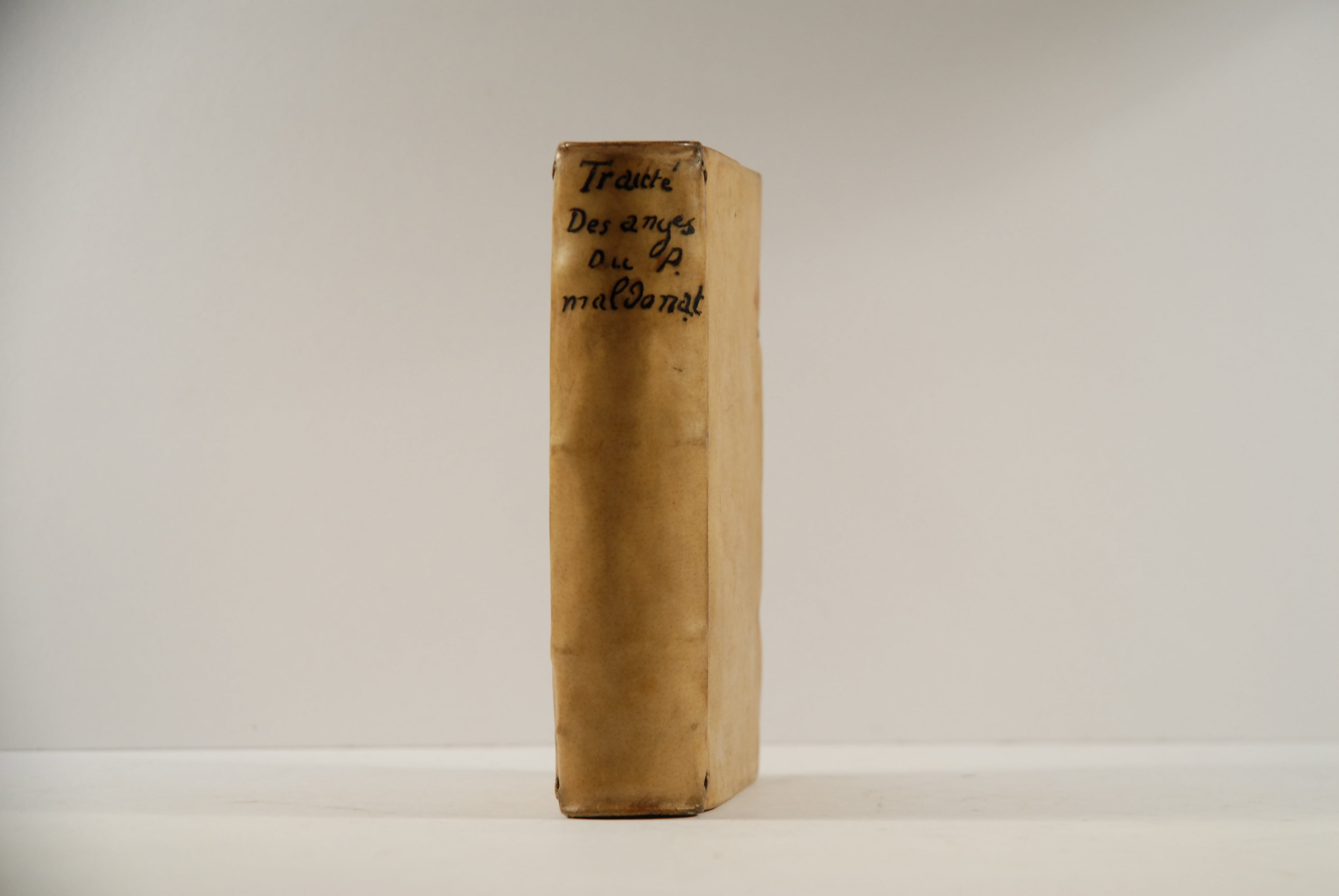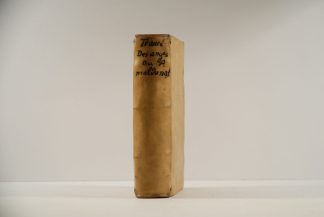MALDONADO, Juan
Traicté des anges et demons, du R.P. Maldonat ... Mis en françois, par maistre François de La Borie …
Rouen, chez Jacques Besonge, rue des Juifs, devant la Gallere, 1616£4,950.00
12mo. ff. [8]-242. ã8, [A-V12, X2.] Roman letter, side notes in Italic. Engraved printer’s device on title, woodcut initials, head and tail-pieces, ‘collegii soctis Jesu Nivellis’ in an early hand at the head of the t-p. Light age yellowing, t-p dusty, minor light waterstain in lower margin in places, the odd mark or spot. A good copy, in contemporary vellum over thin boards, yapp edges, title ms. on spine. lacks flys
Rare popular edition of this important and most influential treatise on Angels and Demons by the Jesuit Juan Maldonado, first published in 1605 in this French translation, though the lectures from which the work derived started in 1571. The work was particularly influential; two of the most important Catholic demonologists, Martin del Rio and the witch-hunting magistrate Pierre de Lancre, were among Maldonado’s auditors, and both drew heavily on him in their own demonologies. This French translation, by Francois de La Borie, brought the work to a much wider audience. “Juan Maldonado, a Spanish Jesuit, was appointed in 1565 to the chair of theology at the College of Clermont, a recently founded Jesuit institution in Paris. … In the academic year 1571-1572, Maldonado gave a series of lectures on demons. These lectures were given on Sundays and holidays to maximize attendance and employed a simple Latin so that more people could understand them. Maldonado presented demonology in terms of the religious struggle between Catholics and Calvinists then convulsing France, emphasizing the connections between heretics, witches and demons. .. Much demonology coming from league supporters, such as the Spanish Jesuit and Parisian professor Juan Maldonado, strongly identified sorcery with heresy, endorsing a witch-hunt as complementary to a campaign to eradicate Protestant heresy. Even Catholics who opposed the League, such as Queen Catherine de Medici (1519-1589) and King Henri III (r. 1574-1589), were often portrayed as demonic witches. (Italians such as Catherine, numerous and unpopular in France, were also frequent targets of witchcraft accusations.) The only major sixteenth-century French demonologists to stand outside this tradition were France’s only Protestant demonologist, Lambert Daneau, and Bodin, who despite his promotion of witch-hunting did not identify witches and Protestants.” William Burns Witch hunts in Europe and America.
“In his famous sermons about the nature of angels and Demons, given at the College of Clermont in Paris 1572, Maldonado, who was generally praised and accepted as a theological authority, answered the question, ‘si les corps peuvent estre changez en diverses formes par les démons?’ In citing well-known examples from classical literature, the Jesuit explained that Demons conducted metamorphosis in three different ways; As a real mutation as when the Egyptian sorcerers had changed their staffs into serpents. However, for Maldonado it remained impossible for demons to transform a human body in such a material way because of its soul and reason. Thus the demons achieved metamorphosis either as an apparition, which deluded both the enchanted and the bystander, or as a delusion which deceived only the enchanted. Maldonado stated that disbelievers in the facts of lycanthropy and shapeshifting acted like Calvinists who denied transubstantiation. Once and for all the Jesuit labelled all sceptics of shape-shifting as heretics and blasphemers.” Willem de Blécourt. ‘Werewolf Histories’.
Caillet, 7043. ‘Curieux traité d’Angéologie et de la Démonomanie.’ Not in BM STC Fr. C17th or Brunet.In stock






